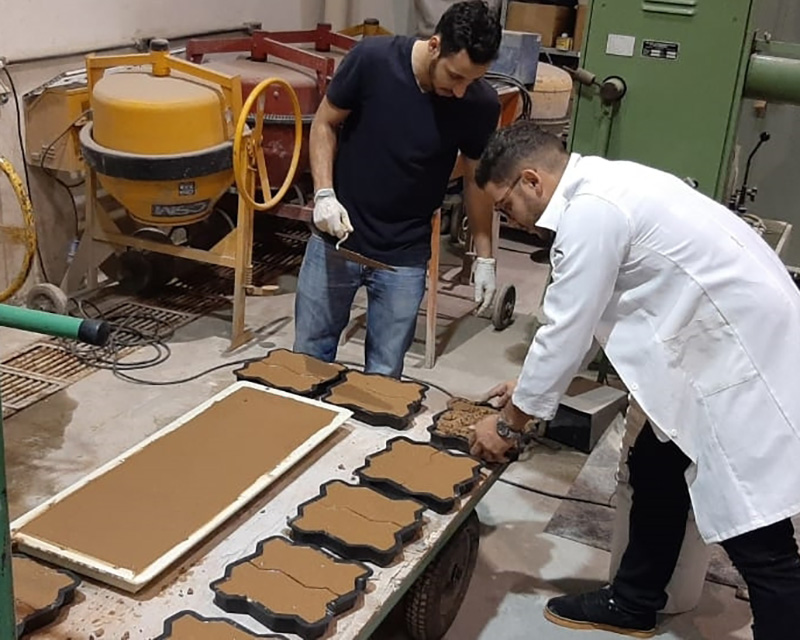July 15, 2022
Partnership Turns Waste into Low-Carbon Cement

Working across continents, Alcoa and the University of São Paulo are unlocking the potential of using untreated bauxite residue to transform one of the world’s most carbon-intensive industries: cement production.
Bauxite residue is a byproduct of alumina refining, comprised of mud, residual caustic soda and, in some cases, a coarse sand fraction. Repurposing this waste in cement manufacturing can significantly reduce the amount of land required to store the material, so we have been researching opportunities for beneficial reuse of the material.
The project with the University of São Paulo is funded by the Alcoa Foundation and it received a best paper award in October of 2022 at the International Committee for Study of Bauxite, Alumina & Aluminium Conference.
The traditional cement-making process begins by heating clay, limestone and other raw materials in a kiln to create a product known as clinker. This clinker is then combined with gypsum and supplementary cementitious materials (SCM), typically fly ash and/or slag, to produce cement. Finally, to make concrete, cement is mixed with water, sand and aggregate.
“Producing clinker is what generates the majority of carbon dioxide (CO2) emissions in the cement industry,” said Lance Myers, Alcoa research program manager and principal research scientist at our Continuous Improvement Center of Excellence. “Our project is examining how we can use bauxite residue to replace the amount of cement, and therefore clinker, that’s required to produce concrete, reducing CO2 emissions. What sets our research apart is that we’ve developed a process that doesn’t require any treatment of the residue beyond adding traditional materials.”
This process of eliminating the need for treatment is key, as these treatments often require heat that generates significant CO2 emissions.
Our scientists in Australia and Brazil and researchers from the University of São Paulo have developed and tested various blended cement pastes containing untreated bauxite residue. Exposure testing of various small-scale concrete products containing this blended cement confirms that they meet requirements for compressive strength, durability and sodium leaching.
“We hope to expand our testing to larger-scale items to further demonstrate the viability of concrete containing untreated bauxite residue,” said Rafael Giuliano Pileggi, professor at the Polytechnic School of the University of São Paulo and presenter of the award-winning paper. “We believe we can replace up to 50 percent of the clinker in blended cement pastes with bauxite residue when making concrete. This potentially can translate into a significant opportunity for using the residue.”